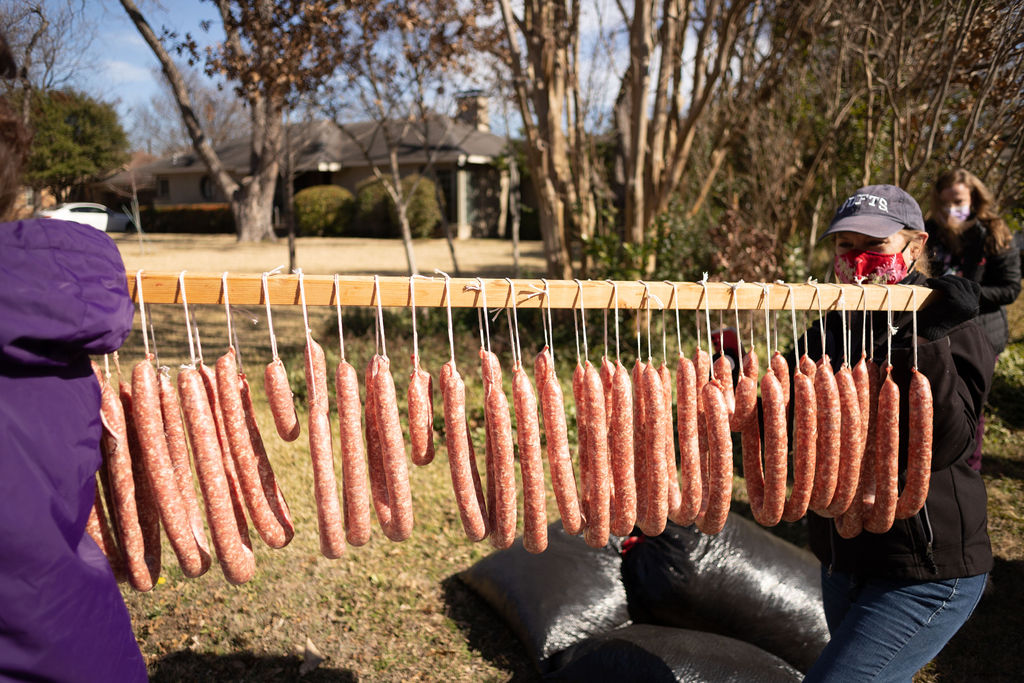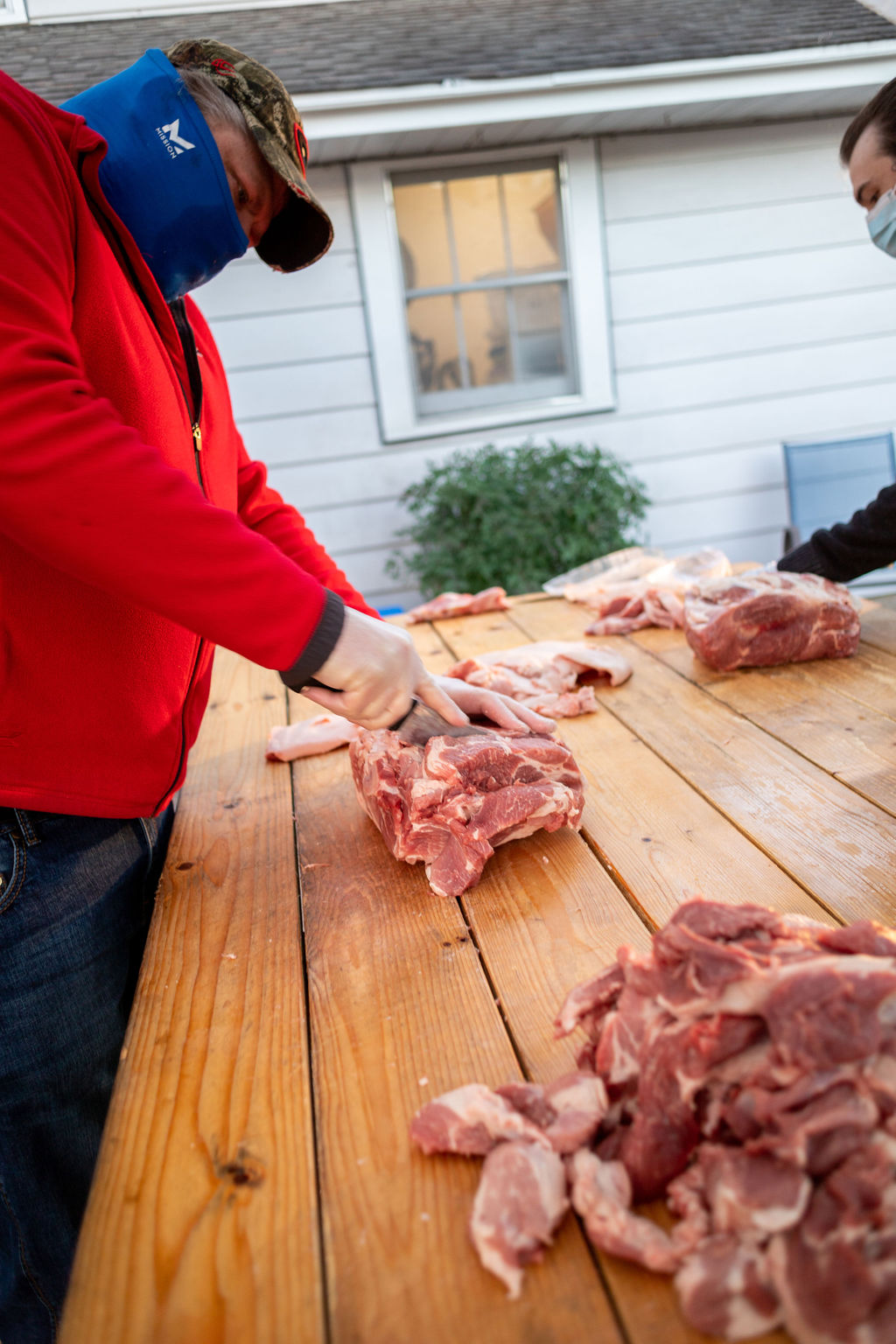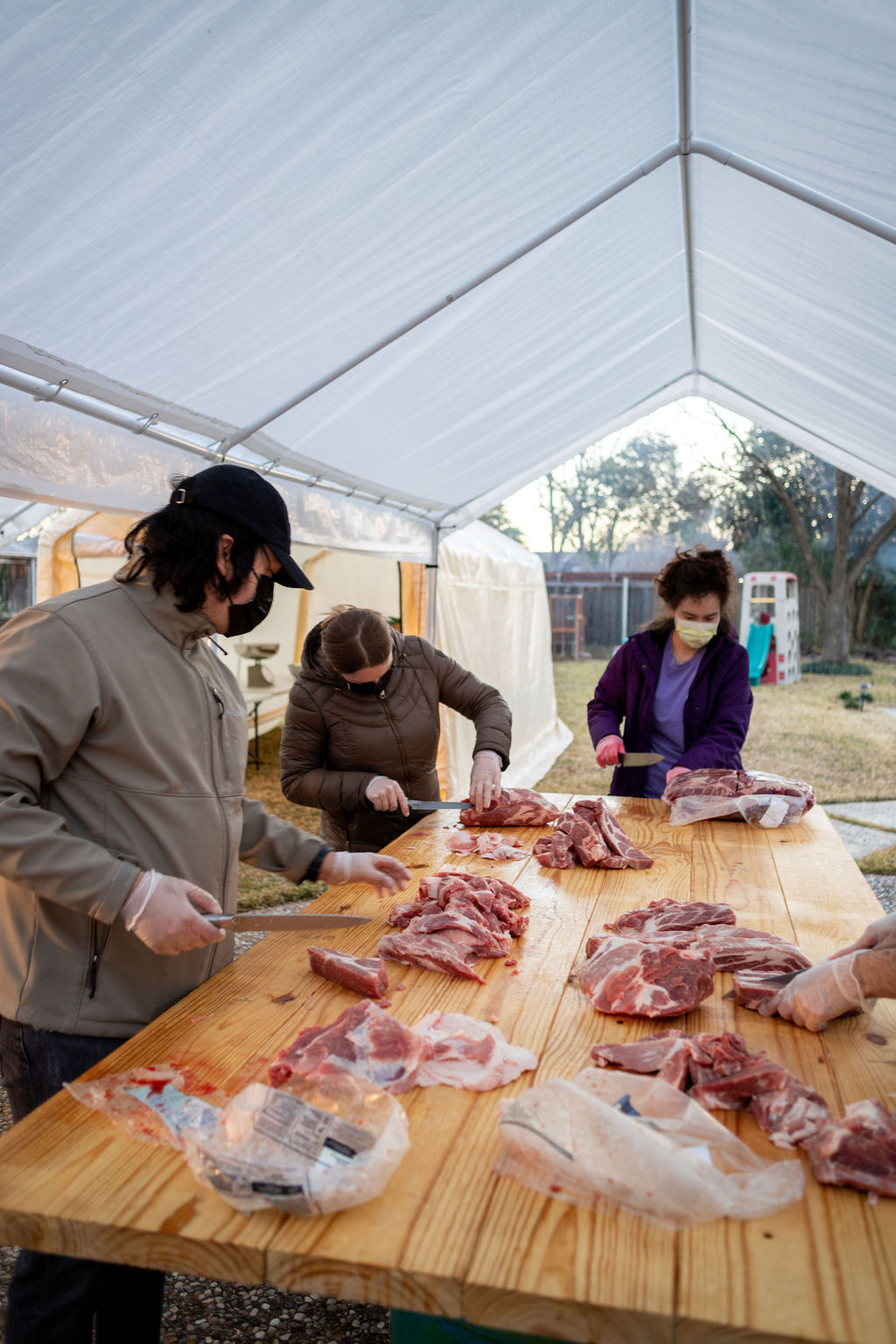Photography by Jessica Turner.
On a brisk morning in January, the Weich family and their friends gather in Casa Linda with more than 200 pounds of meat in hand. Long wooden slabs propped on metal barrels are arranged in the backyard, where everyone gets to work making homemade sausage.
“It’s a family tradition of mine, and it’s something I hope we can do forever,” Beth Weich says.
The ritual started with Beth’s grandmother, a Czech immigrant who made the family recipe every year with her husband in south Texas. Beth grew up making sausage with her extended family in Floresville. The annual gathering drew about 100 people to the ranch, where they would slaughter a pig and cow, then smoke 1,000 pounds of meat in grain silos.
The tradition fizzled out for Beth and her sister, Jeanne Clifford, when they moved to Casa Linda. In 2015, the families bought meat grinders and sausage stuffers to revive the annual event in their new home.

They made 50 pounds of sausage the first year and subsequently boosted their output as the event garnered attention from family in south Texas, as well as friends from school, work and church. This year, about 25 people spent eight hours making 230 pounds of sausage.
“It’s anyone who will listen to our sausage-making party stories and shows interest,” says Elisa Weich, Beth’s daughter. “After their disbelief, they’re like, ‘That’s pretty cool.’ We listen to music, drink beer and make sausage.”
Everyone arrives with their pork at 7 a.m. Saturday while the temperature is still cold. It’s cut off the bone into pieces that will fit in the grinder. The meat is sent through twice. The second time, it’s seasoned with a mix of spices passed down from Beth’s grandparents.
It’s then packed into the stuffer and filled into a casing of hog intestines. The roll of sausage that emerges is cut into 1-pound links and tied with string. They’re hung on two-by-fours and transported down the street to the Cliffords’ house. They put the links in a makeshift smoker in their shed, where the meat is smoked for four hours over pecan and mesquite.
The next morning, everyone returns with butcher paper and freezer bags to collect their links. They’re weighed and distributed according to how much raw meat each person contributed.
“It seems like some of the sausage disappears,” says Joe Weich, Beth’s husband. “There were some suspects, but nothing could be proved. No one was confronted. It’s a lot of good people.”
The sausages can last for three years in a deep freezer, but the families usually run out in about a year. Then it’s time to break out the equipment and assemble the team for another round of sausage making.
“When we were young, we always ran away into the woods and avoided the work,” Elisa says. “When you’re older, you appreciate that these are things your ancestors did. I’ve always felt very connected to my Czech heritage because of this tradition. It was an opportunity to participate in the culture. It’s part of my identity.”












